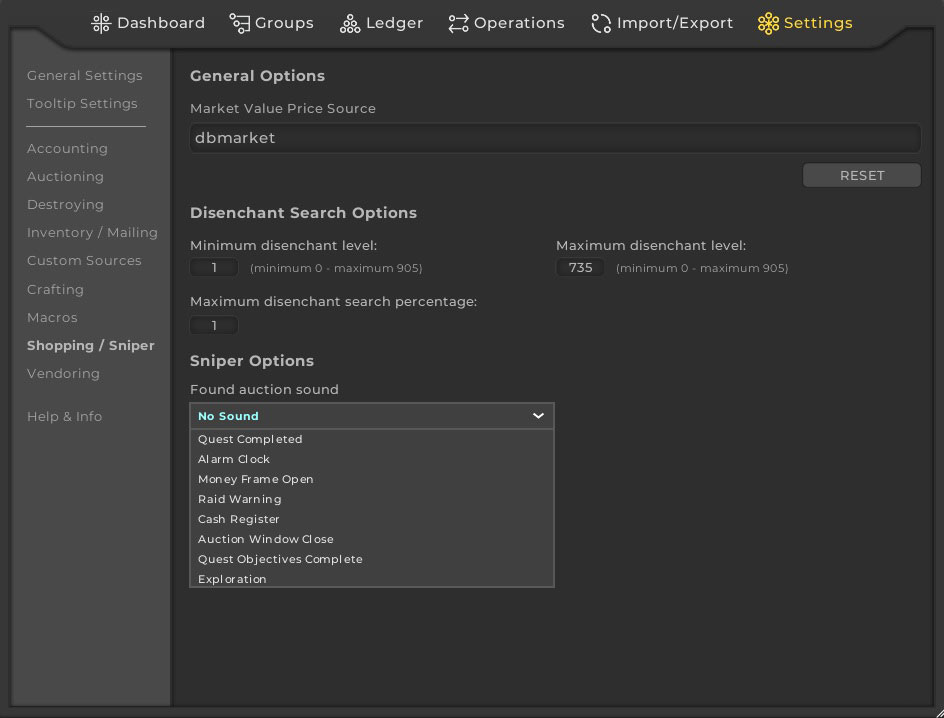

You can go to the operations pane on the TSM main window and click the add button next to the operation type. There are two ways you can make a new operation. You can only apply one shopping operation to a group, as you would typically not have a use for multiple levels of shopping prices. You can run shopping scans for several groups at the time where TSM will scan all the groups and show the pricing data relative to what you have defined in your operation. Shopping operations are used to perform scans of the auction house for an item or a group of items. In this post we will only look at the core auctioning and shopping operations. You can make operations for all of the following things in TSM:

Then you can simply click the relevant action button in TSM and it will quickly perform the actions you have pre-defined. The idea behind operations is to make a rule for how you want to treat the items in the group. TSM includes several modules where you can make operations to easily generate the actions you want. In this post we will look at the basics of shopping and auctioning operations.Īs I mentioned in Part 2, Operations are rules bout how you want to treat your groups. If your intent is to craft and undercut item level 151 crafts regardless of the secondary stat applied to the item, then you would group the item as 'Item Level'.In this post we will be focusing on the second main component of TSM: Operations.

Notice that there are now only 3 items 'Ungrouped' as 2 are of the same item level in the example. This means the BonusIDs that determine the secondary stat(s) are not included when adding the item to a group.

In the following example, 'Show ungrouped items as' is set to ' Item Level'. If your intent is to undercut other item level 151 crafts with 40 Haste and 40 Mastery, then you would group the item as 'Specific Item'. This means all BonusIDs are considered including the item level, secondary stats and required level. In the following example, 'Show ungrouped items as' is set to ' Specific Item'. You generally should not group items by 'Base Item' for crafting purposes. The item level 175 version cannot actually be crafted, Blizzard uses this as the 'base' and then adds BonusIDs for each of the real item variations. In this screenshot, the item in the inventory is item level 210, but shows in TSM as item level 175 to be added to a group. Selecting ' Base Item' in the 'Show ungrouped items as' drop down menu will show the item without reference to any of the BonusIDs that determine the item level, secondary stats, required level or any other information about the actual item. If it finds the base item, the module will ignore all random enchants when conducting its operation(s) for the purposes of that item. When a module goes to look up what group an item is in, it'll look for the specific random enchant first, and then the base item second. This means that if you have the base item in a group, you will still be able to put the specific random enchant in the same or a different group. It's important to note that you can put both the base item (the item without the random enchantment) and specific random enchants in groups. This means you can consider the item level of your craft, but ignore the secondary stat combination(s) of the craft, if you want to undercut any other auction or restock a set number of crafts regardless of those secondary stats. In TSM 4.10, we introduced a new option to group items by 'Item Level'.


 0 kommentar(er)
0 kommentar(er)
